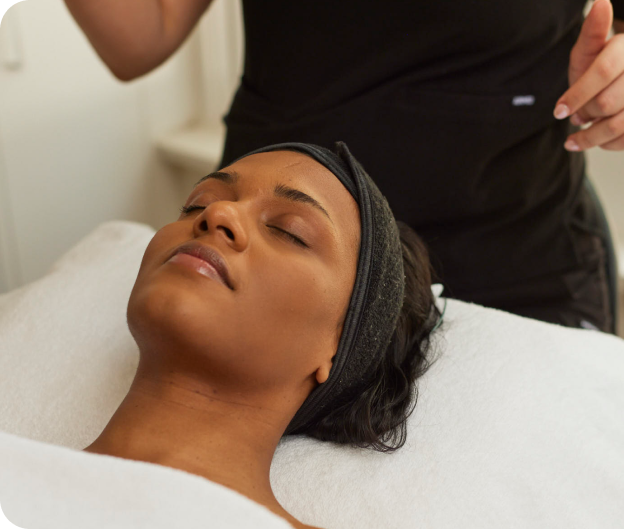Here at Skindepth Dermatology, we treat the condition of acne, a lot. There are many factors of acne that require specific attention and once our practitioners have contained the triggers of a patient's acne, controlled congestion and active breakouts, it's time to tackle the scars that have been left on the skin.

Acne scarring can be categorised as atrophic (dipped), hypertrophic (raised) or dyschromic (discoloured).
Hypertrophic scarring, which includes keloid scarring, is best treated with a combination of ablative laser and intralesional (injected) triamcinolone (steroid) or 5_FU.
Discoloured scarring
Most discoloured scarring is luckily not really scarring at all. Instead, they can be a temporary colour change your skin exhibits as it is healing from the trauma of inflammatory acne or skin picking. Coloured post acne marks can be divided into two types. Red marks are called post inflammatory erythema (PIE) and will fade with time. Darker, pigmented marks are known as post inflammatory hyperpigmentation (PIH) and will also fade with time.
However, where there is white post acne mark, this shows a complete loss of pigment in an area and is called Hypopigmentation. This is the most difficult type of discoloured scarring to treat, and can be permanent. Although more difficult to treat, results may be seen with fractionated laser, and laser assisted drug delivery.
Post inflammatory erythema can be treated with a wide array of modalities including at home skincare (Especially niacinamide, retinol, and Azelaic acid), the use of vascular laser such as the Vbeam pulsed dye laser, Skin needling, Nano fractionated radio frequency, and chemical peels with LED light.
Post Inflammatory Hyperpigmentation can be treated with a combination of pigment laser toning and other fractioned devices such as FraxPro. The most difficult type of discoloured scarring to treat is hypopigmented (white) scarring. This can be permanent, but we can trial some fractioned laser with laser assisted drug delivery.
Atrophic is the most common type of scarring and is broken down into
1) Icepick scars
2) Rolling scars
3) Boxcar scars

Icepick scars tend not to respond to surface procedures due to the depth of the scar. Ice pick scarring requires treatment with TCA Cros (chemical reconstruction of acne scars). Boxcar scars if superficial enough will respond to both ablative and non-ablative fractional resurfacing procedures such as FraxPro 1550 and AcuPulse (CO2) laser procedures. Rolling scars respond to a number of modalities including dermal filler and ablative C02 laser.
If you have specific concerns of atrophic acne scarring, AcuPulse may be a fantastic modality option to help your skin.
Subscision & Injectables for Acne Scars
We can also reply upon a variety of injected solutions into the skin to help reduce the severity of the indentation on the acne scar. At Skindepth, we have a specific acne protocol that relies upon our FraxPro Laser paired with subcision & skin booster/thin dermal filler, to help rejuvenate atrophic scarring from underneath the skin.
This dual targeted approach means different forms of scarring can be treated in the one appointment, from both a structural and topical level, and results can be experienced faster.

If you're concerned with acne scarring to your skin or the skin of a loved one, we would love to discuss treatment options, both medical and cosmetic. Please get in touch with one of our friendly team members who will direct you to the right practitioner here at Skindepth.
